Seeds, soil, sun, and water are the primary ingredients for gardening. However, gardening is hard work that can be made easier with the right tools. A garden tool is essential for performing various tasks in our garden, including trimming, planting, digging, and cutting. Owning a vast collection of gardening tools is unnecessary, but having the essential ones could make maintaining your outdoor space easier.
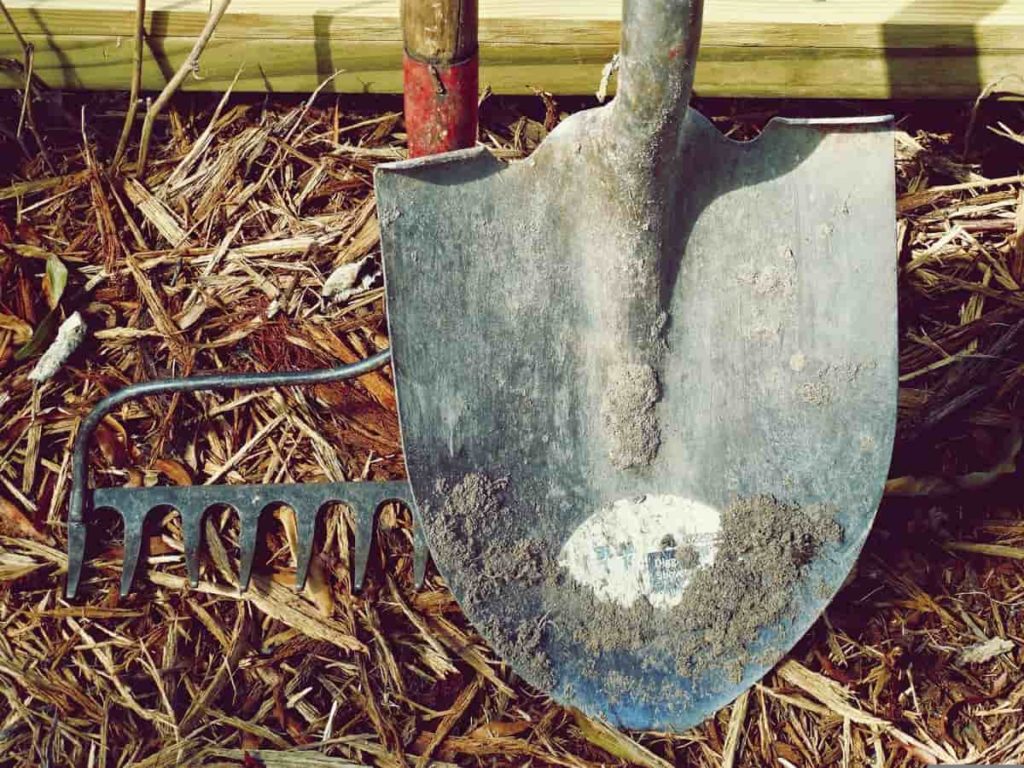
It will be challenging to determine which tools are needed to keep the garden fresh. The tools you need will depend on what you grow, where, and how you grow them, but for most gardeners, these are great tools. An overview of the 40 most essential gardening tools can be found here.
Top 25 tools for gardeners
Hand trowel
A garden trowel is a small, handheld spade or shovel. Handles on garden trowels are usually made of wood, plastic, or rubber-coated metal. In some cases, the metal blades of a garden trowel can be coated or painted; the shovel itself can be made of various metals or even plastic. These handheld shovels have different widths, generally one to five inches.
A garden trowel can also have a flat blade, a curved blade, or a scoop-shaped blade. Planting bulbs, annuals, and perennials require small holes to be dug with a Garden trowel. With a garden trowel, digging a hole for a tree or shrub would take a lot of time and effort. A hand trowel is perfect for transferring dirt into pots or planting seedlings.
Wheelbarrow
The wheelbarrow is a small open cart with one wheel and handles used to carry items. The wheelbarrow is ideal for cultivating a large backyard and helping with various tasks. For example, it is an excellent tool for transporting new seedlings to flower beds. Typically, they are made of galvanized steel, fabric, or rigid plastic.
In case you missed it: How to Make Cow Dung Manure Compost: A Step-by-Step Guide to Use in Your Farm/Garden
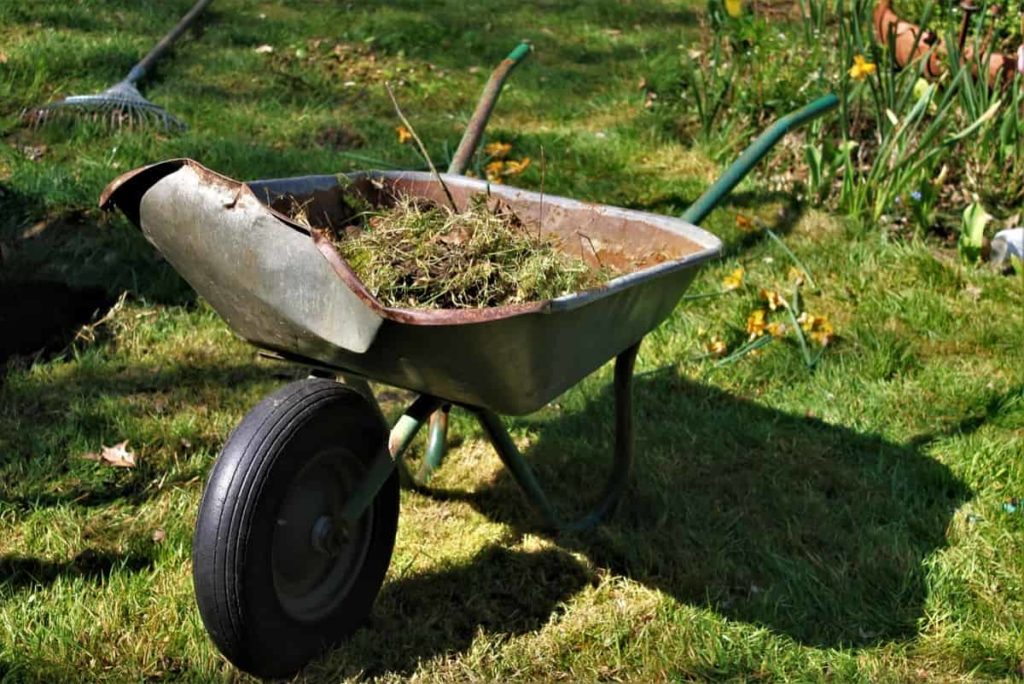
Steel wheelbarrows are used for heavy-duty jobs such as moving rocks, bricks, or large plants. Mulch, compost, garden debris, and smaller plants are all moved in plastic wheelbarrows. However, steel can be damaged by concrete, fertilizers, and cow manure, so plastic is a better option for mixing and hauling these things.
Garden gloves
Hands are protected when gardening and yard work is done with gardening gloves. Gloves come in a variety of types, depending on their purpose. Depending on their strength, gloves may protect the hands from prickles, caustic substances, minor bites, and sharp objects. Wear gloves while gardening to prevent allergic reactions to plants, fertilizers, and other chemicals.
Rake
Garden rakes are indispensable tools for those who have backyards. It can serve various purposes as one of the most commonly used garden tools. You can also use this tool to remove weeds. Keep in mind that not all rakes are the same. A bow rake is different from an average leaf rake in shape. They have short, parallel tines that are only a few inches long. Using this tool, you can collect debris and remove thickly matted, compacted dead turf. In addition to pushing and grooming soil, mulch, gravel, and compost heaps, it is also suitable for leveling them.
In case you missed it: How to Prevent Insect Pests in Vermicomposting: Tips, Ideas, and Techniques for Maggots, Fruit Flies
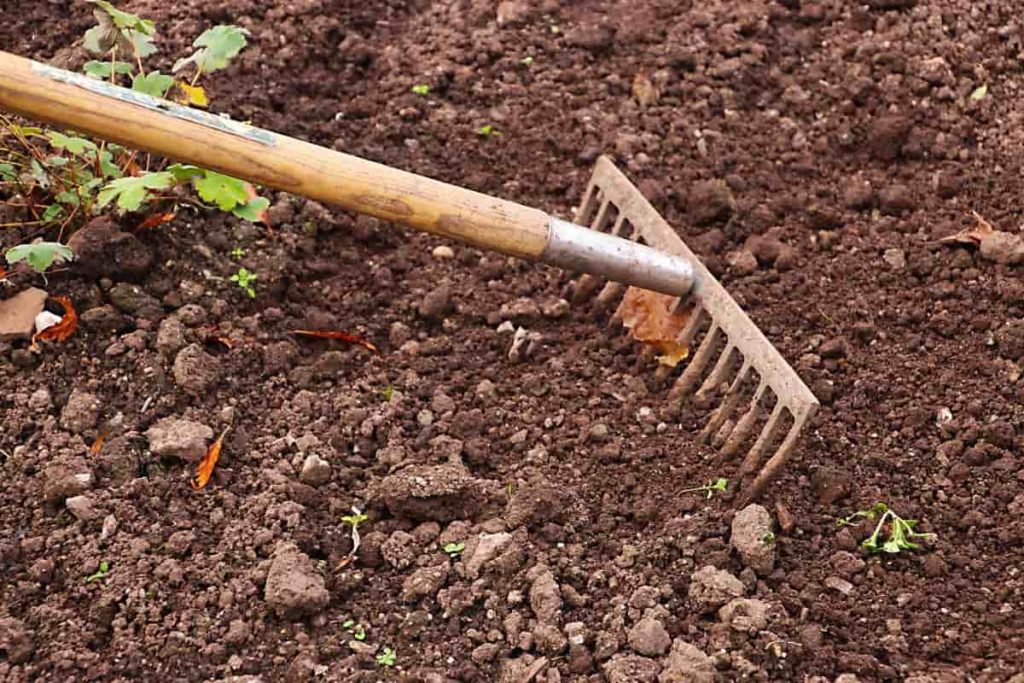
Garden scissors
Using a garden or trimming scissors, you can deadhead plants, snip herbs and flower stems, or prune delicate plants with their delicate, super-sharp blades. This product should not replace a hand pruner but should be used to complement it. When opening drip line emitter boxes, scissors can cut the pipes. They can also be used to cut seed packets and potting soil bags.
Gardening Knife
A weeding tool is a valuable tool for weeding, transplanting, dividing plants, and cutting sod. The steel of some garden knives has a ruler etched into it that can be used when planting bulbs or seeds to measure their depth. You can use the blade’s tip to draw lines into the soil for planting gauges. For instance, a Hori Hori garden knife is a favorite tool among gardeners. Hori-hori knives are commonly used to dig small planting holes, harvest, and cut weeds. They combine the advantages of a knife and a trowel.
Digging shovel
Shovels are also helpful in stirring compost piles or mixing potting soil before adding it to containers. Dirt can be turned or removed easily with a sturdy shovel to create a garden or level the ground. Shovels made of heavy materials are too heavy for digging in gardens; some are lightweight.
In case you missed it: How to Make Sheep Manure Compost: A Step-by-Step Guide to Using in Your Garden

A wheelbarrow and this garden equipment go well together. Dumping an entire load of dirt is unnecessary when transferring dirt, for example. The shovel is not only helpful in digging holes but it can also be used to transport dirt from a wheelbarrow to the garden without having to dump it all at once.
Watering can
Watering cans are ideal for watering small plants evenly and can be used anywhere. A minimum capacity of 2 gallons is needed, but it should also be easy to carry when full. Make sure to choose a model with a removable spout made of plastic or metal. When watering around small containers, a smaller watering can also is beneficial.
Garden spade
This tool has a square-shaped blade design that makes it ideal for use in tight spaces. The blade shape of garden spades makes them helpful in cutting sod, reshaping beds, and digging out deeper planting holes, not for earth moving. Spades can be classified into numerous types based on their specific uses. Handles and blades are also available in many types of materials. Flatheads are also ideal for digging holes or removing plants from the ground.
Garden hoe
A hoe is used for digging up and mounding the soil, dislodging weeds, or cultivating the garden. Some hoes are designed for larger or smaller spaces, while others are designed for specific tasks, such as weeding. This blade is perfect for removing weeds from the garden; it quickly chops through unwanted growth and clears it away.
Additionally, it can be used to spread compost in tight spaces. The size and shape of the blade will depend on the type of hoe and the gardening. For example, you may need a wider hoe when dealing with large areas of dirt or vegetable gardens. On the other hand, it will be better to use a delicate blade for flower gardens.
Garden hose and nozzle
An outdoor hose is a flexible tube that transports liquids from one place to another. Clamps, flanges, and nozzles are usually used to control fluid flow. In addition, the nozzle features allow you to control the water pressure. Garden hose pipes like this one are perfect for watering lawns since they expand as they expand.
It would help if you also got an adjustable spray nozzle and a hose. Not only do these help you prevent water waste between the garden beds, but they also help you control water delivery. Spray nozzles, for instance, have adjustable spray patterns, so you can mist newly planted seeds and seedlings while soaking established plants like tomato plants and flower bushes.
Lawnmowers
Gardens, lawns, grasslands, and other grassy patches or areas in residential and commercial settings require a certain amount of maintenance. A lawnmower, for instance, uses rotating blades to cut grass and eliminate pests lurking in lawns. This lawnmower system also ensures a weekly pick-up and clearance of debris.
In case you missed it: Massachusetts Vegetable Planting Calendar (MA): Month Wise Garden Guide for Fall, Winter, Spring, Summer, Zone 5, Zone 6, and Zone 7
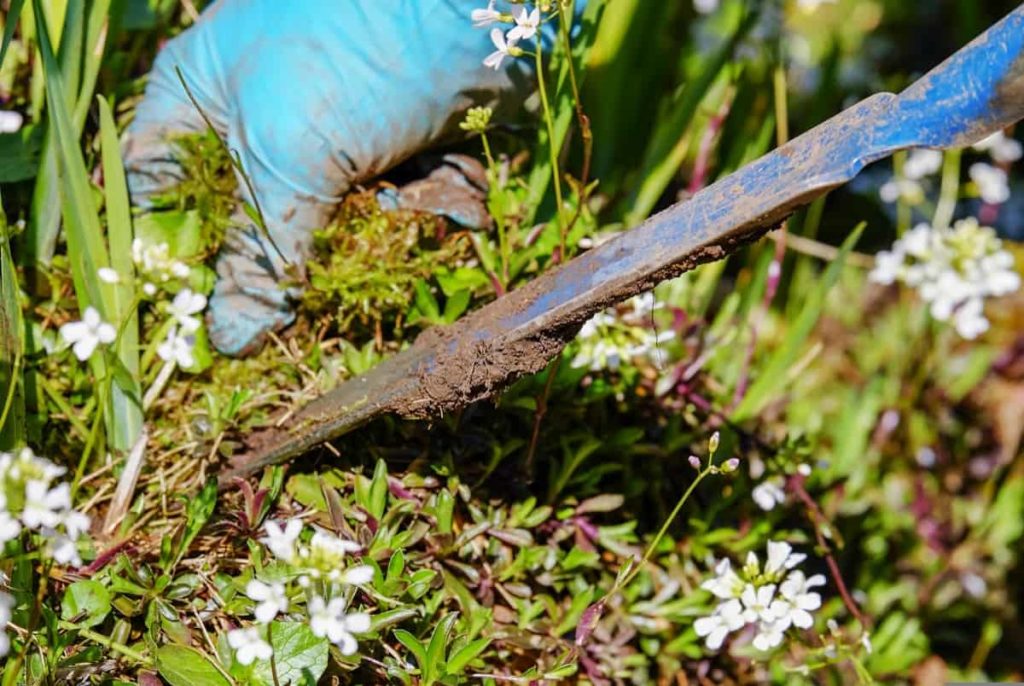
Hedge trimmers
Hedges and bushes can be pruned using a hedge trimmer. There are two types of trimmers: manual and powered. A manual trimmer, or hedge clipper, is a large shear with a long handle that reaches over the tops of bushes. These two types of power-driven trimmers are the most common on the market.
Hedge cutting is made easier with cordless powered hedge cutters. Additionally, there is no risk of being disconnected. The next type of hedge cutter is the petrol-powered one. It is the best choice for cutting large hedges with thicker branches and allows you to work longer. The lightweight and easy-to-use petrol long-reach hedge trimmer are ideal for trimming hedges in a hurry.
Pruning shears
Pruning shears are essential tools for pruning shrubs, flowers, vegetables, fruit trees, and more. Cutting live wood with pruning shears designed for this purpose will deliver smooth and clean cuts. The blades of pruning shears are made of high-grade stainless steel, which is corrosion-resistant, has high hardness, and has precision ground edges. You should choose pruning shears that fit comfortably in your hands since pruning can be repetitive. It is also crucial for a high-quality pruning shear to maintain a sharp edge for longer.
Loppers
The lopper is another gardening tool designed to cut through larger branches. These tools are commonly used to trim hard-to-reach areas and cut thick branches. In addition to providing leverage, the long handles allow cutting through branches with diameters of up to an inch. The average handle length is between 16 and 36 inches. Branches are caught and held by a lopper’s curved blade while the cutting blade cuts the branch.
High trees with thick branches are perfect for pruning with them. Due to its excellent design and quality, this unique tool is highly recommended for gardening. If you have a nice pair of loppers, you can cut branches up to 1-2 inches in diameter. It is usually easier to cut thicker branches with longer loppers.
Weeder
A gardener’s life can be blighted by weeds, which can be extremely difficult to remove. However, you can battle weeds in the garden with a few handy tools. There are two types of hand weeders, known as dandelion diggers by some. Vegetable gardens, orchard basins, and vineyard plantations use weeders to remove weeds. Garden weeders also break up soil crusts and mulch the soil. A hand weeder is also designed to remove weeds growing in crevices and along stone walls.
Pruning saw
Pruning shears are excellent for pruning miniature trees and branches, but pruning saws are more appropriate for giant trees that require much power to cut. With the help of a pruning saw, shrubs and trees can also be shaped. Various pruning saws are available, each designed for a specific type of branch or stem.
In addition to having hard-pointed, heat-treated teeth, pruning saws come in various sizes and shapes. Choosing the correct pruning saw for the job makes it easier to accomplish the task. You can consider using a hand pruner if the branch or trunk you want to trim is under 1.5 inches in diameter. It would be better to use a pruning saw if the wood is thicker.
Hand fork
A hand fork is a handheld gardening tool for small plants or seedlings. Weeding forks are sometimes called hand forks because they are used for digging weeds. The handles of hand forks are usually wood, plastic, or metal and have three sharp, sturdy tines. Besides creating holes in the sand, a hand fork removes weeds and stones, mixes fertilizer in soil treatment, and softens rough ground. But, unlike a shovel, its sharp blades can easily penetrate the ground.
In case you missed it: Top 25 Amazing Annual Shade Plants: How to Grow and Care in Your Garden
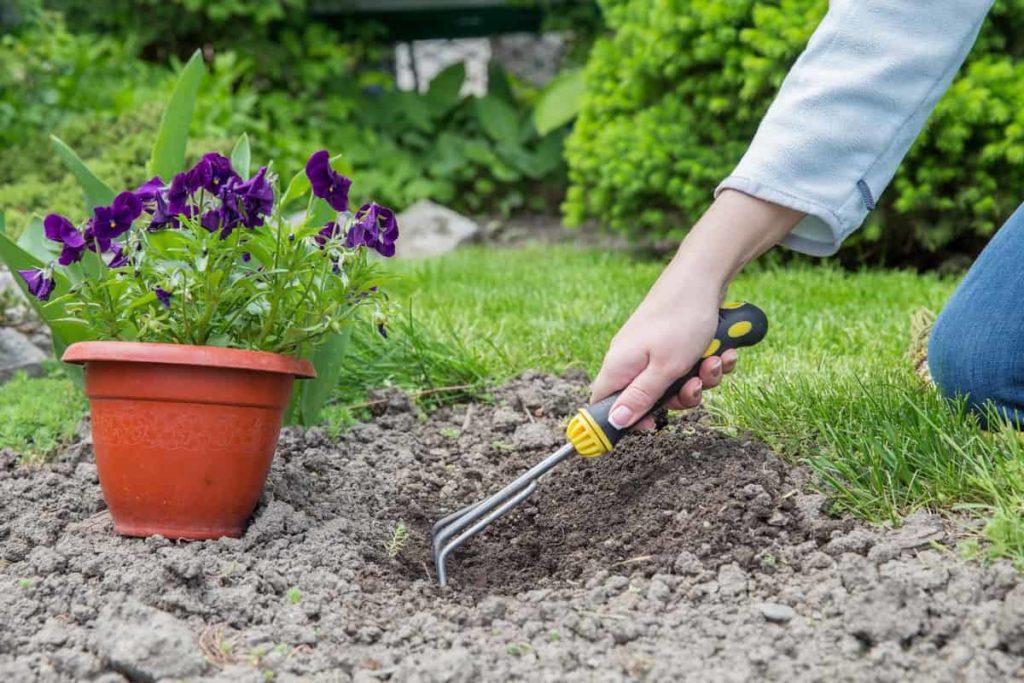
Garden rake broom
With its thousands of curved plastic bristles, the rake broom pulls leaves, grass, pebbles, and other debris into one place. Despite the softness of the bristles, they are strong enough to grip and pull leaves and debris from the lawn without damaging it. In addition, due to the soft bristles, it is possible to separate leaves from gravel paths without shifting the gravel, which is challenging to accomplish with a metal rake.
Widger
An instrument similar to a spatula, this Widger is made of metal. Seedlings and rooted cuttings can be lifted with a widger with minor damage. Instead of pulling the roots from above, it scoops them under and pushes them up from below.
Dibber or bulb planter
Propagation procedures require the use of this small garden tool. The tool is about 15 to 30 cm long and is made of wood, plastic, or metal. It is mainly used to make holes in growing media. A dibber has many different uses, including:
- Making holes in which to plant seeds
- When seedlings are pricked out, they firm up
- Make holes to place stem or root cuttings in so they are not damaged by being forced
- Making holes in plastic woven membrane mulches to plant seedlings.
Sickle
Sickles are curved blades used to cut many stalks of a plant simultaneously. It is common for grass to be cut with a sickle. They are also known as scythes when they are huge. Like modern sickles, Neolithic sickle blades were often made up of small stone blades that were hafted in a long row into a handle. This tool uses this tool to harvest vegetables and cereal crops and cut grass and other vegetation.
Garden water wand
As the name implies, garden water wands are wand-like tools used to water plants. Water flows through the wand to a water breaker or sprinkler head, spraying it in a rain-like shower to water plants. They generally attach to a hose near their handle. Although it is a simple concept, it is not so easy to explain. With a water wand, you can easily spray seedlings, tender new growth, and delicate flowers without blasting or pulverizing them.
A long wand allows water to reach plants at their root zone without bending, crouching, or using stepladders. Additionally, the rain-like spray can reduce transpiration and dry out plants in scorching locations. The water wand is also effective for spraying off pests such as mites and aphids without causing damage.
Garden hod
The Garden hod is the perfect harvesting container for vegetables that need rinsing before consumption. Harvested crops can be washed in several ways with the wire mesh bottom. First, water the whole basket with a hose, dunk it in the sink or lay it over the sink as a colander. There are rectangular wooden ends connected with heavy gauge wire mesh on both sides and the bottom, along with a steam-bent oak handle. Despite a significant harvest, the heavy-duty wire mesh will stand up. Beautiful design and appearance make this harvesting basket stand out. It can be used to harvest vegetables, herbs, and fruits daily.
Garden boots
The purpose of gardening boots is to provide gardeners with sufficient support and protection while performing their daily tasks. Rubber boots of this type are usually waterproof and made of rubber. Their thick soles and interior lines are designed to keep the feet cool regardless of the weather.
Conclusion
It is easy and efficient to do all sorts of gardening activities with the help of gardening tools. However, using the right gardening tools will achieve your desired results. Because cutting tools have movable parts, they must be oiled to maintain ease of movement, and their blades must be cleaned after using sticky plant residues. In addition, they should be sharpened regularly. When buying garden tools, make sure they are high-quality and comfortable. If you take care of them and store them properly, they should last you for many years.
- How to Raise Pigs in Your Own Backyard: A Comprehensive Guide
- Budget Friendly Sheep Shed Ideas: Cheap and Low-Cost Tips
- How Much Do Cattle Farmers Make: Revenue Streams in Cattle Farming
- Management Pests and Diseases in Your Cotton Field
- Sheep Farming Business Plan for Beginners
- Aquaponic Farming at Home: A Step-By-Step Guide
- Profitable Village Farming Business Ideas in 2024
- High-Yield Aquaculture: Fast-Growing Fish for Farming
- Effective Fish Pond Construction Techniques for Beginners
- Irrigation and Water Management in Pineapple Farming
- Blossom to Harvest: Mastering Flowering and Pollination in Papaya Farming
- Pig Fattening Essentials: From Selection to Sale for Beginners
- Raising Wagyu Cattle: A Complete Guide for Premium Beef Production
- Soil Types and Their Water Holding Capacity
- Optimizing Irrigation Schedules for Coconut Groves for Enhanced Yield
- Espresso Your Garden: Coffee Grounds for Healthier Acid-Loving Plants
- The Best Soil Mix for Snake Plants: How to Mix Your Own Snake Plant Soil
- Green Thumb Success: Expert Tips for Cultivating Greenhouse Beans All Year Round
- Bloom All Year Round: The Ultimate Guide to Indoor Hyacinth Care
- Eco-Friendly Gardening: How to Make Liquid Fertilizer from Kitchen Waste
- Ultimate Guide to Grow Anise in Pots: Explore Seed Propagation to Harvesting
- Guide to Raising Chester White Pigs: Discover Breed Facts to Growth Management
- Mastering the Elegance: The Ultimate Guide to Weeping Cherry Tree Care, Planting, and Maintenance
- Ultimate Guide to Planting Garlic in Grow Bags: Growing Strategies for Beginners
- How to Fix Spider Plant Leaf-Related Problems: Natural and Organic Remedies
- 10 Reasons Why Your Tulsi Plant is Shedding Leaves: Home Remedies and Solutions
- Optimizing Growth and Yield: The Advantages of Palm Bunch Ash Fertilizer
- Utilizing Neem Oil Extract as a Natural Pesticide for Hydrangea
- From Soil to Harvest: Various Ways in Which Farmers Can Use AI Tools
- Steps to Encourage and Induce Citrus Flowers: A Comprehensive Guide
- How to Fix Snake Plant Leaf-Related Issues: Natural and Organic Remedies
- Transform Your Garden into a Fragrant Oasis with Raat Ki Rani (Night Blooming Jasmine)
- Discover the Ideal Chicken Breeds for Philippine Farms
- How to Create a Poultry Egg Farm Business Plan for Profits
- Grow Lemon Cucumbers Like a Pro: Insider Techniques for Bountiful Yields
- Ultimate Guide to Caring for Your Pink Princess Philodendron: Tips for Thriving Variegation
